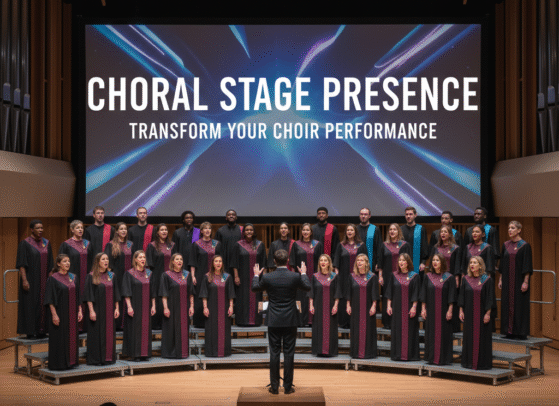Pop, Rock, and R&B – Mastering the Sounds that Move the World
In today’s diverse musical landscape, three genres stand out not only for their immense popularity but also for their richly expressive vocal demands — Pop, Rock, and R&B. While each genre commands attention in its own way, they collectively shape the foundation of modern vocal performance. Pop vocals draw listeners in with their pristine precision and catchy clarity, Rock vocals captivate through raw power and unfiltered energy, while R&B vocals soothe and stir with soulful depth and emotional nuance. Together, these vocal styles offer singers a dynamic range of expression, making them essential areas of mastery for any versatile performer.
Because of these differences, mastering vocals in Pop, Rock, and R&B goes far beyond basic technique — it demands emotional depth, stylistic awareness, and the ability to adapt your voice across a wide expressive range. As a result, whether you’re an aspiring vocalist taking your first steps or a more seasoned singer seeking to expand your skill set, diving into these genres can be a transformative step toward elevating your artistry and commanding greater presence on stage.
To guide that journey, this comprehensive guide will walk you through the essentials. We’ll begin by uncovering what sets each genre apart, then move into the foundational vocal techniques that all three share. From there, we’ll explore practical, genre-specific strategies to help you strengthen your voice, connect emotionally with your audience, and deliver performances that both captivate and resonate.

Understanding the Essence of Pop, Rock, and R&B Vocals
Before diving into vocal techniques, it’s crucial to first grasp the heart and soul of each genre’s vocal style — because effective singing is not just about hitting notes but about embodying the music’s spirit.
The Art of Pop Vocals
Pop music is the soundtrack of mainstream culture, defined by catchy hooks, memorable melodies, and a clean, polished vocal sound. The hallmark of Pop singing lies in its clarity, controlled delivery, and melodic accessibility. Pop vocalists need to balance technical precision with an inviting warmth that draws listeners in.
Unlike some other genres, Pop often leans on vocal subtlety, requiring singers to master smooth phrasing, precise pitch control, and tasteful embellishments. Think of artists like Taylor Swift, Ariana Grande, or Ed Sheeran — their voices sound effortless but are actually the result of careful technique and vocal discipline.
The Power and Passion of Rock Vocals
Rock singing, on the other hand, is all about raw emotion, intensity, and vocal power. Unlike Pop’s refined tone, Rock embraces vocal grit, dynamic range, and expressive force. It demands vocal stamina and the ability to deliver both thunderous belting and soft, emotional passages.
Rock vocalists tell stories through their voice, often channeling angst, rebellion, or passion. The genre’s vocal texture can include rasp, distortion, and growls, all of which must be executed with care to avoid damaging the vocal cords. Legends like Freddie Mercury, Janis Joplin, and Steven Tyler perfectly embody this vocal intensity.
The Soulful Nuance of R&B Vocals
R&B vocals are renowned for their soulful depth and emotional richness. This genre places heavy emphasis on vocal ornamentation — think melismas, intricate runs, and subtle dynamic shifts. Unlike the straightforward melodies common in Pop, R&B encourages singers to explore vocal nuances and phrasing that communicate intimate feelings.
Breath control, smooth transitions, and expressive vibrato are essential tools for R&B singers. The genre’s vocal style is sensual and heartfelt, often utilizing falsetto or head voice to create contrast and texture. Artists like Beyoncé, John Legend, and H.E.R. exemplify this soulful expression.

Bridging the Common Ground | Essential Vocal Foundations
While Pop, Rock, and R&B vocals each bring their own distinct challenges and stylistic nuances, they are all built upon a shared set of core techniques. Despite their differences in tone, texture, and delivery, these genres rely on the same foundational vocal skills — breath control, pitch accuracy, tone quality, and emotional expression. Developing these essentials is crucial for any singer aiming to progress confidently across styles, as they provide the technical grounding needed to explore the full expressive range of each genre.
1. Mastering Breath Control and Support
One of the most essential—and often overlooked—foundations of great singing is breath control. It’s not just about taking in air; it’s about using it with precision and purpose. At the heart of this lies diaphragmatic breathing, a technique that provides the steady support needed to sustain long notes, maintain pitch stability, and deliver emotionally resonant performances. Without this control, even the most talented singers may struggle with vocal strain, fatigue, or inconsistent tone.
To begin developing this skill, shift your focus from shallow chest breathing to deeper, abdominal breathing. Inhale slowly through your nose, allowing your belly—not your chest—to rise as your diaphragm expands. Then, exhale in a controlled and steady stream, engaging your core muscles to manage airflow. Over time, this technique becomes second nature, powering your voice with stability and strength—just like fuel powers an engine.
2. Developing Pitch Accuracy and Ear Training
Pitch precision is vital in all genres. Training your ear through scales, intervals, and vocal exercises strengthens your ability to sing on key and harmonize effectively. Using tools like a keyboard, tuner apps, or backing tracks can accelerate your ear training.
3. Building Vocal Strength and Flexibility Through Warm-Ups
Vocal warm-ups aren’t just a pre-singing ritual — they’re a vital part of protecting and preparing your most important instrument: your voice. Much like athletes stretch before a performance, singers must condition their vocal cords to handle the demands of singing. Start with gentle hums to activate resonance, move into lip trills to engage breath support, and add sirens to connect your vocal registers. Follow this with scales to gradually expand your range and fine-tune pitch control. Over time, this intentional warm-up routine not only reduces the risk of strain or injury but also boosts vocal agility, enhances tonal clarity, and sets the stage for a stronger, more confident performance.
4. Focusing on Diction and Articulation
Clear diction ensures your audience understands every lyric. Practice enunciating consonants and vowels distinctly, and be mindful of breath support to avoid mumbling or overly breathy tones.
5. Connecting Emotionally with the Song
Technical skill alone can lay the foundation, but it’s the genuine emotional connection that truly breathes life into a performance. When you deeply feel the story and meaning behind a song, your singing shifts from being merely mechanical to profoundly magical. To achieve this, make it a habit to ask yourself: What is the story this song is telling? How can I express its emotions authentically through my voice? By continuously reflecting on these questions, you create a powerful bond between the music and your audience, making every note resonate with heartfelt meaning.

Deep Dive into Genre-Specific Techniques and Tips
With a solid foundation now established, the journey ahead naturally becomes about progression — not in leaps, but in deliberate, connected steps. What you’ve gained in technical skill doesn’t exist in isolation; instead, it begins to support something greater. As your control improves, it gradually opens the door to emotional expression — and that expression, in turn, becomes the key to unlocking your unique identity as a vocalist.
This shift from technical ability to stylistic awareness is not a departure from your earlier work, but a direct extension of it. The breath control, tone shaping, and pitch accuracy you’ve practiced now take on a new role. No longer just training drills, these skills evolve into tools for interpretation and artistry. You’re no longer just singing the notes — you’re shaping phrases, communicating emotion, and developing intention behind every line.
It’s at this point that your vocal journey naturally begins to branch into more defined territory. The fundamentals remain, but how they’re applied starts to depend on genre. Pop vocals draw upon clarity and precision, molding them into smooth, vibrant tones designed for accessibility and impact. Rock vocals, in contrast, push those same foundations toward intensity and edge, embracing grit, projection, and fearless emotional delivery. Meanwhile, R&B vocals reinterpret control as nuance — favoring vocal runs, melismas, and expressive inflections that flow with soul and subtlety.
Thus, what comes next isn’t a reset, but a transformation — where everything you’ve built is still present, but reimagined through the dynamic, expressive lenses of Pop, Rock, and R&B vocals. With that in mind, let’s step into each style and discover how these foundational skills evolve into genre-specific artistry.

Pop Vocals | Polished Precision Meets Emotional Subtlety
Pop singing requires a careful balance between flawless technique and engaging personality. To develop a captivating Pop vocal style, focus on these essential areas:
Achieving a Clean, Bright Tone:
Aim for a vocal tone that is bright and clear without sounding overly nasal or breathy. Use a balanced mix of chest and head voice to maintain rich resonance naturally, avoiding any forced or strained sounds that can tire your voice.Smooth Register Transitions:
Practice blending your chest voice with your head voice to eliminate noticeable breaks or cracks. This seamless transition allows your voice to move effortlessly through your entire range, which is especially important when hitting high, sustained notes in Pop melodies.Dynamic Versatility:
Develop the ability to sing softly and intimately during verses, then switch to powerful, soaring choruses. Experiment with gradual crescendos and decrescendos to add emotional depth and keep your audience engaged throughout the song.Stylistic Embellishments:
Incorporate tasteful vocal runs, riffs, and slides into your singing. Study contemporary Pop artists carefully to understand their phrasing and unique stylistic nuances, then adapt these elements into your own vocal interpretation to add flair and originality.Microphone Technique:
Since Pop performances often involve close microphone use, learning to control your volume and distance from the mic is crucial. This skill helps prevent distortion and enables you to create moments of intimacy or dramatic impact, depending on the song’s mood.
By mastering these techniques, you’ll build a polished, expressive Pop vocal style that not only showcases your technical skill but also connects deeply with your listeners.

Rock Vocals | Harnessing Strength and Emotion Safely
Rock vocals are bold, intense, and emotionally charged — but they also require control, technique, and vocal care. Here’s how to build a powerful and expressive rock voice while protecting your instrument:
Building Vocal Power:
To deliver the powerful, energetic sound rock demands, start by strengthening your diaphragmatic breath support. This allows you to sustain loud singing without tension. Engaging your core muscles and opening your throat helps maximize resonance, letting your voice cut through the music without strain.Safe Vocal Distortion:
Adding grit and character through techniques like rasp and growl can elevate your rock vocals. However, these effects must be learned properly — ideally with a vocal coach — to prevent damage. Use your false vocal folds for distortion and avoid pushing your true vocal cords to maintain vocal health.Endurance Training:
Rock performances are often physically demanding and require stamina. Build your vocal endurance gradually by increasing practice time and incorporating strength exercises such as sustained notes and dynamic drills. This prepares your voice to handle long, intense performances.Expressive Dynamics and Storytelling:
Rock music thrives on emotional contrast. Use vocal dynamics creatively — shifting from whispers to shouts, slow passages to fast, and soft moments to loud — to engage your audience and bring your songs to life.Learning from the Greats:
Study recordings of legendary rock singers to understand how they balance raw power with emotion. Notice how they preserve their voices through touring and maintain vocal health, taking inspiration to guide your own technique and performance style.

Mastering R&B Vocals | Soulful Technique Meets Emotional Expression
R&B vocals are known for their emotional depth, smooth phrasing, and intricate vocal embellishments. To excel in this genre, singers must balance technical skill with authentic storytelling. Here are the key areas to focus on:
Mastering Vocal Runs and Melisma:
Fast, flowing runs and melismas are signature elements of R&B. Start slow with scales and arpeggios, focusing on clarity and pitch accuracy. As your coordination improves, gradually increase speed while keeping each note clean and connected. Precision and smoothness are key to delivering runs with grace.Utilizing Vibrato Effectively:
Vibrato adds warmth and emotional color to sustained notes. Develop a natural, relaxed vibrato — not too fast or wide — by practicing steady tones with gentle pitch variation. Use it sparingly, especially at the end of phrases, to enhance expressiveness without overdoing it.Perfecting Phrasing and Sliding:
Sliding between notes gives R&B vocals their signature conversational feel. Practice subtle glides into pitches and pay close attention to lyric phrasing — where to pause, stretch, or soften your delivery. These nuanced choices bring depth and intimacy to your performance.Expanding Falsetto and Head Voice:
R&B often leans on the softness of falsetto and head voice, especially in choruses or ad-libs. Strengthen your upper register with light exercises and work on smooth transitions from chest to head voice. A well-blended top range adds texture and emotional pull.Channeling Emotion Through Nuance:
Ultimately, R&B is about honest emotion. Whether it’s love, heartbreak, or longing, connect deeply with the lyrics and let that emotion guide your dynamics, tone, and delivery. Even the smallest vocal shifts — in breathiness or volume — can leave a powerful impression when they come from a real place.

Turning Practice Into Progress | Building a Vocal Routine That Works
To truly master the vocal demands of Pop, Rock, and R&B, regular and intentional practice isn’t optional — it’s essential. But it’s not just about putting in the hours; it’s about how you use your time to strengthen your voice and refine your technique. Here are some structured, practical ways to ensure your practice sessions lead to real, measurable progress.
Start by Recording Yourself Regularly
One of the most effective ways to assess your growth is to listen to yourself. Recording your practice sessions allows you to step back and evaluate objectively — where are your strengths? Where do you tend to go off-pitch or lose clarity? This habit not only sharpens your ear but also provides a clear record of your improvement over time.
Break Songs Into Manageable Sections
Once you’ve identified areas that need attention, don’t try to tackle the entire song in one go. Instead, divide it into smaller segments. Focus first on the trickiest parts — maybe a high chorus, a fast vocal run, or a gritty bridge. Slow those sections down, repeat them often, and gradually increase the tempo as your confidence builds. This methodical approach ensures each phrase becomes second nature.
Practice With Backing Tracks or Karaoke
After you’ve mastered the basics of a song section, it’s time to apply those skills in a musical context. Singing along with backing tracks or karaoke versions mimics real performance conditions. It helps develop your timing, pitch control, and expressive delivery — all while building your comfort level with accompaniment.
Don’t Hesitate to Seek Professional Guidance
While self-practice is crucial, there’s no substitute for expert feedback. A vocal coach can pinpoint subtle issues you might miss and offer targeted exercises to improve technique. Whether it’s learning how to belt safely, refining your melismas, or controlling rasp in your voice, professional guidance can fast-track your vocal development and help you avoid bad habits.
Always Prioritize Vocal Health
Above all, protect your instrument — your voice. Staying hydrated, getting enough rest, and avoiding strain from yelling or whispering are foundational habits for any serious singer. Warming up before practice and cooling down afterward ensures your voice remains strong and resilient over the long haul.

Overcoming Common Vocal Challenges
Even the most seasoned singers encounter challenges along their vocal journey — and this holds true across all styles, including Pop, Rock, and R&B vocals. Each genre brings its own set of demands, from Pop’s precise control to Rock’s vocal stamina to R&B’s intricate runs and phrasing. What sets great vocalists apart isn’t the absence of obstacles, but how they respond to them — with self-awareness, patience, and the right strategies tailored to their genre. Let’s explore some of the most common setbacks and how to overcome them with clarity and confidence.
1. Vocal Fatigue or Strain
If your voice feels tired, tight, or strained after singing, it’s often a sign of poor technique or overuse. Rather than pushing through discomfort, take it as a cue to slow down. Begin every session with a proper warm-up, stay well-hydrated, and don’t hesitate to rest your voice when needed. If the problem persists, working with a vocal coach can help you identify and correct underlying technical issues.
2. Pitch Inconsistency
Struggling to stay on pitch is more common than you think — and entirely fixable. Instead of trying to power through off-key moments, focus on ear training and slow, deliberate practice. Use a piano or tuning app to guide you through scales and intervals. Repetition at a manageable pace helps retrain both your ear and vocal coordination, making accuracy second nature over time.
3. Nervousness and Stage Fright
Performance anxiety can affect even the most talented singers. The key is preparation and mental conditioning. Frequent rehearsals build muscle memory, while breathing exercises help regulate nervous energy. Visualization techniques — imagining a confident, successful performance — paired with positive affirmations can rewire your mindset and reduce fear. Remember, nerves are natural; managing them is the real skill.
4. Register Breaks and Vocal Cracks
Sudden shifts or cracks between chest and head voice can be frustrating, but they’re also a sign that your vocal registers need better blending. Strengthening your mixed voice is essential here. Practice exercises like vocal sirens or gentle glides across your range to smooth out the transitions. Over time, you’ll develop greater control and fluidity across registers.

The Final Note | Let Your Voice Lead the Way
As you move further into the world of Pop, Rock, and R&B vocals, remember — true mastery doesn’t come from sounding like someone else. It comes from discovering your own voice, your unique tone, and the emotion only you can bring to the music. That’s what truly connects with an audience.
But this kind of growth doesn’t happen all at once. It unfolds gradually — through daily practice, mindful technique, and a deepening sense of expression. As your skills evolve, so does your ability to shape your voice around different genres, letting your individuality shine through every phrase.
That’s why every warm-up, every vocal run, and every song you attempt is part of something bigger. It’s not just training — it’s transformation.
To support that transformation, The Mystic Keys offers Western Vocal Lessons Online that go beyond technique. Our lessons are designed to guide you through the distinctive styles of Pop, Rock, and R&B — helping you build a voice that’s both technically sound and emotionally resonant.
So as you continue this journey, stay committed to your craft. Keep practicing, stay curious, and when you’re ready for the next level, let The Mystic Keys walk with you — step by step.
Your voice has something to say. Nurture it, express it, and most of all — let it soar.








